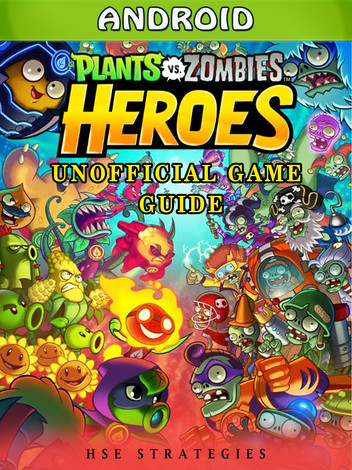
The Ultimate Guide to Android News: From Leaks and Rumors to Technical Realities
Navigating the Constant Stream of Android News
The world of Android is a relentless torrent of information. Every day brings a new leak, a software beta, a rumored chipset, or an official product launch. For enthusiasts, developers, and even casual consumers, this constant flow of Android News can be both exciting and overwhelming. How do you distinguish a credible leak from baseless speculation? What does a change in a processor’s nanometer process actually mean for your next device? And how do developments in wearables or tablets connect to the smartphone in your pocket? Simply keeping up is a challenge; truly understanding the implications is another level entirely.
This comprehensive guide is designed to be your compass in the dynamic landscape of Android. We will deconstruct the anatomy of the news cycle, from the shadowy origins of rumors to the polished presentations of official announcements. We’ll dive deep into the technical jargon that fills headlines, translating specifications into real-world impact. By exploring the entire ecosystem—from Android Phones to the burgeoning world of Android Gadgets—you’ll gain the tools to not only follow the news but to analyze it critically. This article will equip you with the knowledge to become a more informed consumer, a more prepared developer, and a more discerning tech enthusiast.
The Anatomy of Android News: Sources, Cycles, and Credibility
Understanding where Android news originates is the first step toward mastering it. The information pipeline is a complex mix of official declarations, calculated leaks, and pure speculation. Recognizing the source and its place in the product lifecycle is crucial for assessing its credibility.
Official Channels vs. The Rumor Mill
Information about the Android ecosystem flows from two primary types of sources, each with its own purpose and reliability.
Official Channels: These are the most reliable sources, providing confirmed information directly from the companies involved. Key examples include:
- Google’s Official Blogs: The Android Developers Blog and The Keyword blog are primary sources for major OS updates, feature drops, and security bulletins.
- Manufacturer Press Rooms: Companies like Samsung, OnePlus, and Xiaomi maintain official newsrooms for product announcements, press releases, and event schedules (e.g., Samsung Unpacked).
- Keynote Presentations: Events like Google I/O are meticulously planned showcases for the future of Android, introducing new software versions and hardware concepts.
While official news is 100% accurate, it is also carefully curated marketing. It tells you what companies want you to know, often omitting drawbacks or competitive disadvantages.
The Unofficial Rumor Mill: This is where the majority of day-to-day Android News comes from. It’s a diverse ecosystem of leakers, analysts, and data miners.
- Established Leakers: Individuals like Evan Blass (@evleaks) or Steve Hemmerstoffer (@OnLeaks) have built reputations on their track records of accurate pre-release information, often obtained from insider sources. They typically share marketing renders and key specifications.
- Supply Chain Sources: Reports from publications like DigiTimes often cite anonymous sources within the component manufacturing supply chain, providing insights into future production plans, screen orders, or chipset allocations.
- Code Commits and Teardowns: Tech-savvy journalists at sites like XDA Developers or 9to5Google analyze code in the Android Open Source Project (AOSP) or tear down APKs (Android Package Kits) of apps like the Google Camera to find clues about unannounced features and devices.
- Benchmark and Certification Databases: Before a device can be sold, it must be certified by regulatory bodies like the FCC (USA) or TENAA (China). These listings often confirm key specs and sometimes even device schematics. Similarly, early benchmark scores on platforms like Geekbench can reveal the processor and RAM of an upcoming phone.
Best Practices: Vetting Your Sources
Navigating the rumor mill requires a healthy dose of skepticism and critical thinking. Always cross-reference a new rumor with multiple, independent, and reputable sources. Pay attention to a leaker’s history; are they consistently right, or do they have a mixed track record? Finally, learn to differentiate between a vague rumor (“Samsung is working on a new camera”), a specific leak (“The Galaxy S25 Ultra will use a new 200MP Isocell sensor with a 1/1.1-inch format”), and an official confirmation. This tiered approach helps manage expectations and filter out the noise.

Decoding the Technical Jargon: What Really Matters in Android News
Headlines are often filled with technical specifications that can be confusing. Understanding the core components of Android Phones and what their metrics actually mean is essential for interpreting the news and making informed decisions.
Hardware Breakthroughs vs. Iterative Updates
Not all hardware news is created equal. It’s vital to understand the difference between a true generational leap and a minor refresh.
System on a Chip (SoC): The SoC is the brain of the device. News often focuses on the manufacturer (Qualcomm Snapdragon, MediaTek Dimensity, Google Tensor). A generational leap, like moving from the Snapdragon 8 Gen 2 to the 8 Gen 3, brings a new architecture, a smaller manufacturing process (e.g., 4nm to 3nm), and significant gains in CPU, GPU, and AI performance. An iterative update, like the Snapdragon 8+ Gen 1, is typically a mid-cycle refresh with a higher clock speed, offering modest performance gains and better efficiency. The real-world impact? A generational leap enables new capabilities like on-device generative AI or more complex mobile gaming, while an iterative update offers a smoother experience and slightly better battery life.
Display Technology: Beyond resolution (e.g., 1080p vs. 1440p), the key terms in display news are refresh rate and brightness. A high refresh rate (120Hz or higher) makes scrolling smoother. However, the real innovation is LTPO (Low-Temperature Polycrystalline Oxide) technology, which allows for a variable refresh rate (VRR). An LTPO panel can dynamically drop to 1Hz when viewing a static image and ramp up to 120Hz for gaming. This has a massive, direct impact on battery life—a far more significant feature than simply having a fixed 120Hz panel.
Camera Sensors & Computational Photography: Megapixel counts are often used for marketing, but sensor size is a more critical metric. A larger sensor (e.g., a 1-inch type sensor) can capture more light, resulting in better low-light photos with less noise. News about “pixel binning,” where multiple pixels are combined into one “super pixel,” explains how a 200MP sensor can produce a high-quality 12MP image. Equally important is the software. Google’s Pixel phones, for example, have historically used less impressive hardware but achieved stunning results through advanced computational photography and AI processing via their custom Tensor chips. Therefore, news about a new camera sensor must be weighed alongside news about the SoC’s Image Signal Processor (ISP) and software algorithms.
Software: The Core of the Android Experience
Hardware is only half the story. Software determines the user experience, security, and longevity of a device.
OS Updates vs. Security Patches: A major OS update (e.g., Android 14 to Android 15) introduces new platform features, APIs for developers, and significant UI changes. A monthly security patch, by contrast, fixes vulnerabilities and is crucial for user safety but doesn’t change functionality. When a manufacturer promises “7 years of updates,” it’s critical to read the fine print: are they promising 7 years of major OS updates or just security patches? The former is far more valuable.
Manufacturer Skins (One UI, OxygenOS, etc.): Very few phones run “stock” Android. Most manufacturers apply a custom “skin” on top of AOSP. News about a new version of Samsung’s One UI, for instance, is significant because it brings features that may not be available on a Google Pixel and vice versa. However, these skins are also the primary reason for update delays, as manufacturers must adapt the new Android version to their custom software.
The Expanding Ecosystem: It’s More Than Just Phones
The world of Android extends far beyond the slab smartphone. News about wearables, foldables, tablets, and automotive platforms is increasingly important, as Google and its partners focus on creating a seamlessly interconnected ecosystem of Android Gadgets.
Android on Different Form Factors

Foldables & Tablets: The news cycle for these devices focuses heavily on two areas: hardware durability (hinge mechanisms, screen creases) and software optimization. The introduction of Android 12L was a landmark news event, as it signaled Google’s renewed commitment to large-screen devices with features like the taskbar and improved multitasking. When a new foldable like the OnePlus Open is announced, the most insightful reviews and news coverage will analyze not just the hardware specs, but how well its software (OxygenOS) leverages the larger folding display for productivity.
Wearables (Wear OS): For years, Wear OS news was stagnant. The turning point was the announcement of the Google-Samsung partnership to merge Tizen and Wear OS. This single piece of news revitalized the entire platform. Today, key news stories for Wear OS revolve around chipset efficiency (e.g., the Snapdragon W5+ Gen 1, which promised huge battery life gains), the expansion of Google Wallet and other key apps, and new health sensors being integrated by partners like Samsung and Google (for the Pixel Watch).
Android Auto & Automotive OS: There’s a crucial distinction here that news often covers. Android Auto is an interface that projects from your phone onto the car’s screen. Android Automotive OS is a full-fledged operating system that runs natively on the car’s hardware, no phone required. News about major Android Auto redesigns, like the “Coolwalk” UI which brought a split-screen dashboard, impacts millions of existing users. In contrast, news about Volvo or GM adopting Android Automotive OS signals a deeper, more integrated future where the car itself is an Android device.
The Impact of AI and Interconnectivity
The latest wave of Android News is dominated by Artificial Intelligence. Google’s integration of its Gemini models into Android and Samsung’s launch of “Galaxy AI” features represent a fundamental shift. News is no longer just about faster processors, but “smarter” ones. Actionable insights come from understanding what these AI features mean in practice: Are they on-device or cloud-based? Do they require a subscription? How do they improve on existing functionalities? Similarly, news about ecosystem features like Nearby Share’s expansion to Windows or the refinement of Fast Pair is critical, as it points to a future where your collection of Android gadgets works together seamlessly.
Practical Application: Becoming an Informed Android Enthusiast
With a solid understanding of the sources, technology, and ecosystem, you can now build a practical strategy for consuming Android news effectively.

Setting Up Your News Feed
Don’t rely on a single source. Create a curated information diet. Use an RSS reader like Feedly to subscribe to a mix of reputable outlets. Include a high-level site (e.g., The Verge), an Android-specialist site (e.g., Android Police, 9to5Google), a deeply technical site (e.g., AnandTech, XDA Developers), and the official Android Developers Blog. This provides a balanced perspective, from consumer-facing news to the nitty-gritty technical details.
When to Care About a News Story
Not every story requires your immediate attention. Develop a filter based on your interests:
- As a Consumer: Pay closest attention to news about software updates or security issues for your current device. When considering a new purchase, focus on official reviews, long-term support policies, and direct comparisons that appear after a product’s launch. A rumor about a phone launching in 18 months is tech trivia, not actionable information.
- As a Developer: Your focus should be on official announcements from Google I/O, beta releases of new Android versions, and posts on the Android Developers Blog. These sources provide critical information about upcoming API changes, new platform requirements, and tools that will directly impact your work.
Common Pitfalls to Avoid
Finally, be aware of common cognitive biases. Avoid confirmation bias—don’t just seek out news that praises your favorite brand while ignoring its flaws. Don’t get lost in the “spec sheet wars”; a phone with slightly lower benchmark scores but better software optimization and battery life is often the superior device in the real world. Above all, treat early rumors as entertainment, not fact, until they are widely corroborated.
Conclusion: Mastering the Flow of Android Information
The landscape of Android News is vast and intricate, but it is not impenetrable. By understanding its fundamental structure—from the official sources and the unofficial rumor mill to the product development cycle—you can begin to assess the credibility and significance of any new piece of information. Translating technical jargon about SoCs, displays, and camera sensors into tangible, real-world benefits allows you to see past the marketing hype. Recognizing that the ecosystem of Android Gadgets is just as important as the flagship Android Phones provides a more holistic view of the platform’s direction. By curating your sources, applying a critical filter to what you read, and avoiding common pitfalls, you can transform from a passive recipient of headlines into a truly informed and empowered Android enthusiast, ready to appreciate the technology and make smarter decisions in this ever-evolving digital world.



